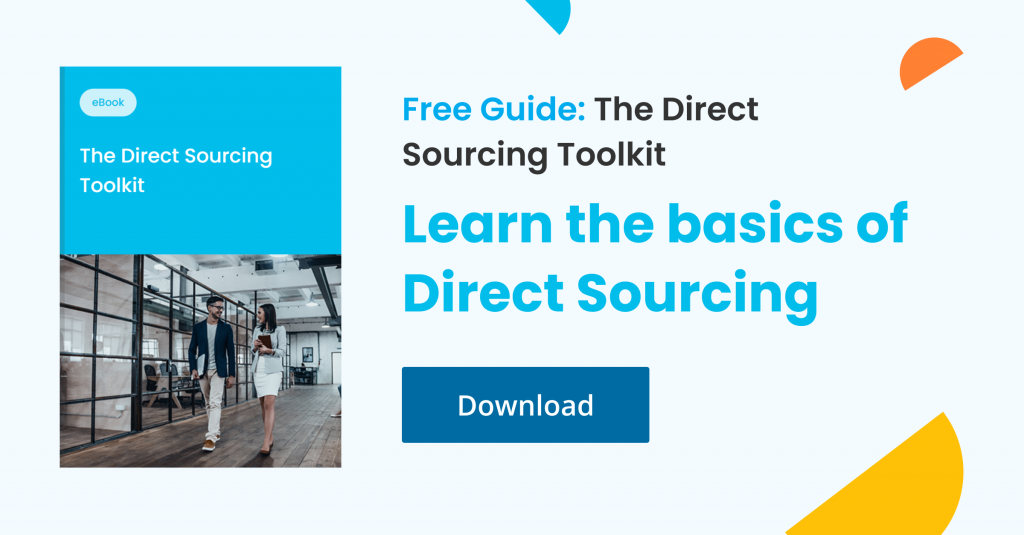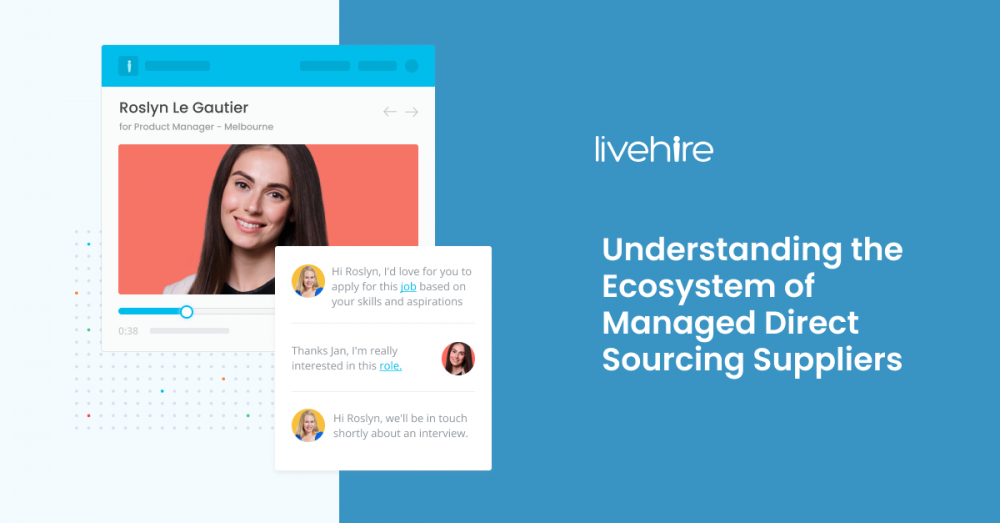
The global workforce is shifting toward contingent labour more rapidly than ever before. What is causing this shift and what does it mean for organisations?
The rise of the contingent workforce
The world of work is undergoing unprecedented shifts globally.
Driven by a range of factors from cost reduction to agility, the contingent workforce has been a major player in this shift, steadily increasing for some time. Add a global pandemic into the mix and yep, you guessed it, this growth is accelerating exponentially.
The ‘gig’ or contingent workforce represents anywhere between 15-25% of the global workforce today and Gartner anticipates a significant swell upwards in this number to represent 40% by 2025.
So, what does this shift mean for employers and their workforce?
What has been evident for a while now is that talent attraction and retention are considered top tier priorities for CEOs. Interestingly, the pandemic has brought forth new shifts in priorities that align with this. 77% of CEOs now plan to build out further on digital communication tools, 73% believe working remotely has opened up their talent pool, and 85% believe the pandemic has sped up digital transformations. This has the potential to translate into greater access to talent and better ways to engage with this talent, but also the need for specialised talent in the competitive digital sector.
Now an ongoing challenge for employers is that leading talent are very much in a position to cherry pick their contingent job opportunities. It continues to be a candidate’s market.
In a growing, candidate-led market, there is a significant cost factor at play here for employers using traditional recruitment methods. High margins are associated with sourcing contingent workers via multiple staffing agencies. For some time this has been the accepted norm, but the tides are changing. Companies today, from across the globe, are looking to more agile, innovative and cost-effective ways to source the best contingent talent.
So, what is the secret to getting ahead? Whilst a relatively new concept in Australia, ‘Direct Sourcing’ programs globally are offering employers a means to the effective sourcing of contingent workers by leveraging their employer brand and significantly reducing costs. To better understand how to take advantage of this opportunity, LiveHire recently broadcasted a webinar on Direct Sourcing Programs for ANZ which featured a global panel of Direct Sourcing pioneers:
- Helen Hopkin, Human Capital Leader, Head of Workforce Strategy PWC, UK
- Linc Markham, (Previously) Head of Contingent Workforce at BP, USA
- Terri Gallagher, Founder Gallagher and Consultants, USA
Specifically, the panel explored Direct Sourcing through the lens of lessons learnt from the US and UK covering the following hot topics:
- What is Direct Sourcing for the contingent workforce?
- How can you get started with a Direct Sourcing program?
- What can you expect from your Direct Sourcing program?
- Tips for managing your existing stakeholders in the business
- How do you measure Direct Sourcing program success?
Lets now go ahead and unpack each topic in further detail.
What is ‘Direct Sourcing’?
At face value ‘Direct Sourcing’ seems like a simple concept, one that has stood the test of time in the permanent recruitment world. However, as it relates to the contingent workforce, there are a few competing definitions in the market today.
The panel neatly sums up Direct Sourcing as the process wherein companies leverage their own brand and network to attract and engage contingent workers. That is, they create an internal Talent Cloud of candidates for temporary employment roles at their company.
The challenge in contingent workforce programs
The challenge with traditional contingent workforce programs is they involve multiple recruitment companies, duplication of data, high margins and talent that is often not sourced directly. Further, the candidate relationship resides with the staffing agency, and their brand and values.
How to tackle contingent workforce programs with Direct Sourcing
So, this leads employers to turn to Direct Sourcing. The results can be outstanding when an organisation has the available resources and expertise to implement this strategy to attract, engage, and hire talent. However, we tend to see higher rates of success for organisations that work with external partners to operate their contingent Talent Cloud – a concept we refer to as ‘Managed’ Direct Sourcing.
When considering rolling out Managed Direct Sourcing, the model’s success operates on three key principles:
- Excellent technology
- Great people (in-sourced/ outsourced) and
- The right process underlying it from payroll right through to compliance and beyond.
To sum up, Managed Direct Sourcing programs utilise external sourcers and curators that manage your branded Talent Cloud for your contingent workforce. Talent is directly sourced and the employer brand is leveraged to attract the best talent via a candidate-centric experience.
A deeper dive into the key benefits of Direct Sourcing
Risk versus reward. Organisational change can be hard and, let’s face it, not always fruitful! In many cases, it may seem easier to stick to the devil you know. Do the benefits of Direct Sourcing programs outweigh the cost of implementing a new model organisation-wide?
The expert webinar panel highlighted a range of key benefits that Direct Sourcing programs have to offer over traditional contingent workforce programs.
“Cost savings, a highly dynamic candidate engagement and it frees up resources so that your recruitment staff can be focused on more strategic thinking.”
Terri Gallagher
Key benefits of Direct Sourcing include:
- Lowering the cost of your contingent workforce management program
- Significant cost reduction with each hire, ranging from 30-50% reduction in staffing margin
- When implemented, Managed Direct Sourcing programs average 50-70%+ placement rates per year
- No overhead costs
- Freed up company resources due and time to the company brand and tech doing the ‘heavy lifting’
- Time-to-hire contingent workers is accelerated
- On-boarding process improvement
- Quality of contingent hires improves as you gain timely access to top talent
- Outstanding candidate experience that attracts the best talent and enhances your brand
- Ability to move from a reactive to a proactive approach to sourcing talent by growing talent pipelines in advance of hiring needs
How can you get started with a Direct Sourcing program?
“Start with a mapped out idea of what you want to achieve.”
Linc Markham
First and foremost, Direct Sourcing should be considered in the broader context of a company’s talent supply strategy. Key considerations include thinking about major workforce planning objectives and understanding where the company’s skill gaps are.
Once you’re ready to get started with a Direct Sourcing program, it’s time to leverage your employer brand to build a contingent Talent Cloud. The expert panel recommends getting an early start to your technology strategy as you embark on this journey.
Further, Gallagher suggests that companies should be discerning buyers when evaluating Managed Direct Sourcing partners, taking the time to get educated on 3 key components:
- People;
- Process and;
- Technology
Hopkin advises on the importance of thinking carefully about the tech infrastructure a company requires in order to achieve their objectives. Markham points out that building the candidate perspective into the process from the beginning is imperative for achieving a superior candidate experience and net promoter score.
Lastly, leveraging internal champions for program implementation is proven to greatly facilitate the process from the outset.
Who within the business operates the Direct Sourcing program?
When implementing any new process or technology it is vital to reach consensus over where in the organisation the responsibility should primarily sit.
Direct Sourcing programs typically reside within Procurement, who work closely with HR, Legal and IT. However a shift is beginning to emerge whereby HR are having joint ownership with Procurement – or in some cases – full accountability. Hopkin shared, for example, that PWC UK had recently moved the program away from Procurement to their HR function.
When should you bring on a tech partner?
One of the most challenging aspects of implementing a new process can be knowing at what point in the piece to bring on board a solution provider.
When it comes to Direct Sourcing programs, the expert panel agrees that the right technology partner should be identified early in the process to maximise success.
The expert panel also advises that companies get clear on their Direct Sourcing Program vision first, then examine their in-house expertise before selecting to partner with a Managed Service Provider (MSP) for support.
Tips for managing existing stakeholders in your business
“Engage the whole organisation.”
Terri Gallagher
How do you keep everyone invested in your vision?
Once you’ve mapped out your contingent workforce strategy and selected your tech partner, you will no doubt begin considering how best to ensure the program is positively adopted across the organisation. The bottom line? Stakeholder adoption is vital for user adoption.
Hopkin recommends finding ways to take your business on the Direct Sourcing journey with you. Gallagher echoed this sentiment by sharing that it’s key to engage the entire organisation. A final hot tip the panel imparted is leverage your internal champions to fuel successful program implementation.
How do you measure direct sourcing program success?
As previously touched on, implementing something new across any organisation can be tough going. How can you tell if the ROI is there, the fruit of your hard labour paying off?
Whilst every organisation’s objectives will vary, the following list of indicators are a great starting point for any organisation:
- Conversion rates right through the conversion funnel (from sourcing to recruitment)
- Cost saving
- Diversity and inclusion measures
- Speed to market
- Candidate quality
- Output and
- Adoption of approach
Unanimously, the expert panel emphasises the importance of having strong KPIs in place.
Why use Direct Sourcing for your contingent workforce management program?
Direct Sourcing is a real opportunity to get ahead in an unprecedented era of global workforce change. Whilst, Australia is still starting out on its Direct Sourcing program journey, experience from the US and UK show direct sourcing programs present a highly favourable solution for companies looking to not only attract top talent but also drive down costs.
Contractors today represent among the best talent in the world. It follows then that the quicker you can get started, the sooner you gain access to the wealth of talent available.




